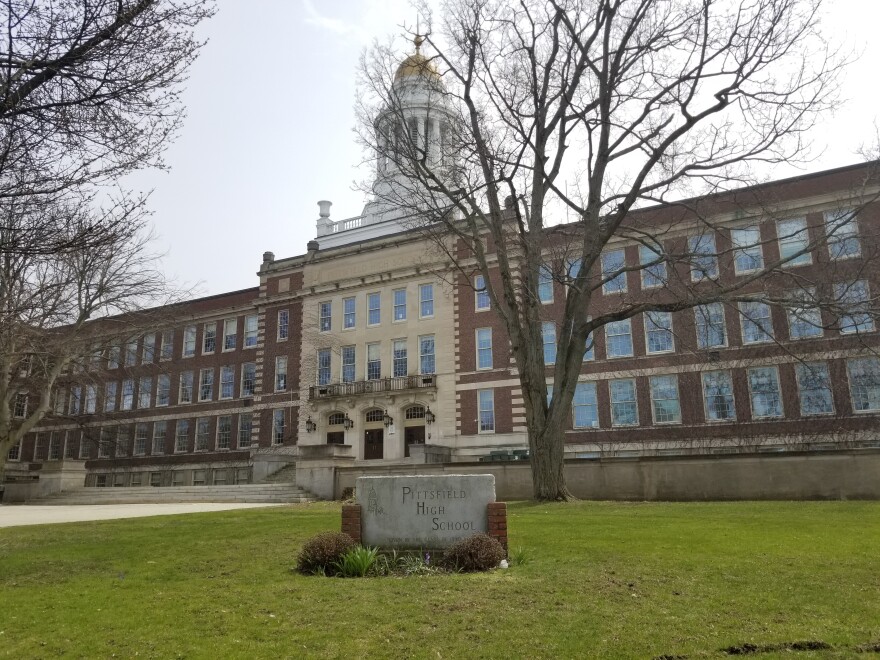Public school superintendents around Berkshire County are working around the clock to prepare contingency plans for the fall semester.
After a spring semester thrown into chaos by COVID-19, Massachusetts school administrators are scrambling to adapt to the ever-changing demands of the pandemic era.
“It is very difficult because there is a lot of noise, and we have to make sure that we’re using really reliable data sources that will really inform decision making and inform the process," said North Adams Public Schools Superintendent Barbara Malkas. “I know people want information yesterday, and yet I am of a mind that it is better to be very methodical and very strategic in our thinking so that we’re really treating this a public health issue as opposed to considerations for politics or opinion.”
Along with her colleagues throughout the county, Malkas is following the guidance of the Massachusetts Department of Elementary & Secondary Education, or DESE – which requires schools to submit reopening plans by July 31st.
“So we are in the process of doing our classroom capacity studies," she told WAMC. "We only received the tools to do that from DESE about two weeks ago, so we launched as soon as we received that tool and we’re very busy doing that.”
“We have a reopening task force of now over about 70 community members," said Beth Regulbuto, the superintendent of the Southern Berkshire Regional School District, which serves Sheffield, New Marlborough, Egremont, Monterey, and Alford. “A combination of school committee, parents, teachers, administrators, just community members, public health officials, nurses, anybody who wants to participate in being part of planning for the upcoming fall school year, whether that is in a fully on-site, a hybrid model, or a remote learning model of delivering education."
Of the three models the schools must prepare for, Regulbuto says the hybrid model is receiving the most attention.
“Right now what it’s looking like is to ensure that there’s five days of learning each week, cohorts – the district will be split into cohorts," she explained. "Cohort A would come in on Monday and Tuesday. Wednesday would be a full deep cleaning of the district and professional development and still a check-in with families at home. And Thursday-Friday would be cohort B. We’d shorten the day a little bit to allow for those additional check-ins, and we’re incorporating social-emotional check-ins at the beginning and the end of the day in the form of advisories or group meetings.”
“Our intention in Pittsfield is to offer at a minimum a hybrid model where some students will be in the building – maybe not a full day, maybe not a week at a time, but there will be in-person instruction, contact, counselling services, therapeutic services available, but not to the entire student body at one time,” said Jake McCandless, the Superintendent of the Pittsfield Public Schools, the county’s largest district.
The city’s teachers’ union, United Educators of Pittsfield, is calling for the semester to begin remotely and then phasing into a hybrid model later in the year.
Despite the July 31st deadline for proposals, districts won’t determine what path will be followed immediately.
“They’re asked us to hold off on actually picking what that looks like until mid-August, around August 10th, and we are still waiting daily for various levels of guidance, so it would make it really hard to pick anything at this time,” said Regulbuto.
“If I had to make the decision today based on data that we have today, I would say that we will be able to accommodate in-person instruction for our elementary schools, pre-K through 6th, and at the high school for grades 7-10," said Malkas. “We’re still looking at the capacities with respect to our students in grade 11 and 12. We may have to consider a hybrid model where the students are in for half the day and then working remotely half the day.”
From student configurations to the school buildings themselves, public education is being transformed in the shadow of a worst-case scenario: a COVID-19 outbreak in the system.
“We’ve been working with our facilities people to create rooms that have negative pressure, so if we suspect somebody is infected or presenting symptoms they can sit in a place where the air is blown outside while they wait to get picked up," said Peter Dillon, the superintendent of the Berkshire Hills Regional School District, which represents Great Barrington, Stockbridge, and West Stockbridge. “One of the big things we’ve been working on is how can you schedule kids in their day so they’re in small, largely self-contained groups or pods, so in the event that somebody were to become infected, that you could then do something with a smaller group of people and not have to shut down the whole school. I think if you were in a situation where multiple people became affected across multiple pods, then you might move towards shutting down a whole school.”
With the ever-changing nature of the pandemic, inconsistencies between state and federal guidance and families stretched thin by the demands of remote learning and child care, Malkas says the situation requires superintendents to stand firm.
“We don’t become superintendents to be popular," she told WAMC. "We become superintendents because we care about children and we want to make sure that if we are tending to their learning needs, we’re doing so in a way that allows them to be healthy, to remain safe.”






